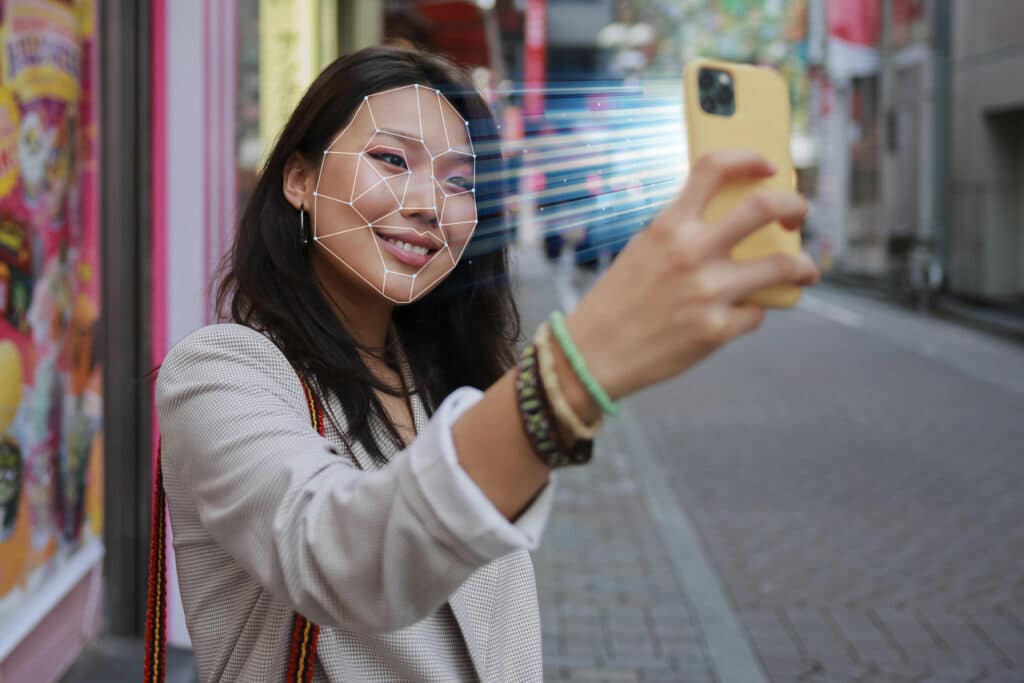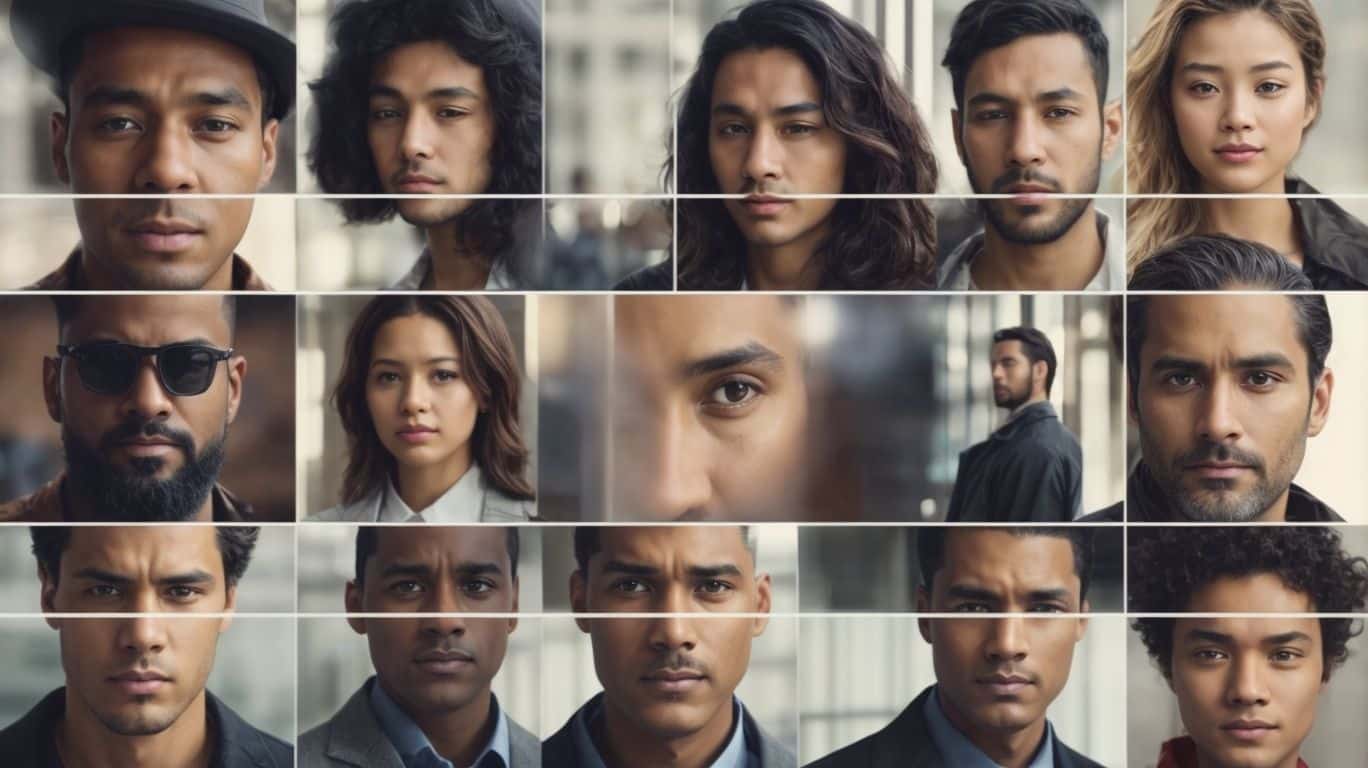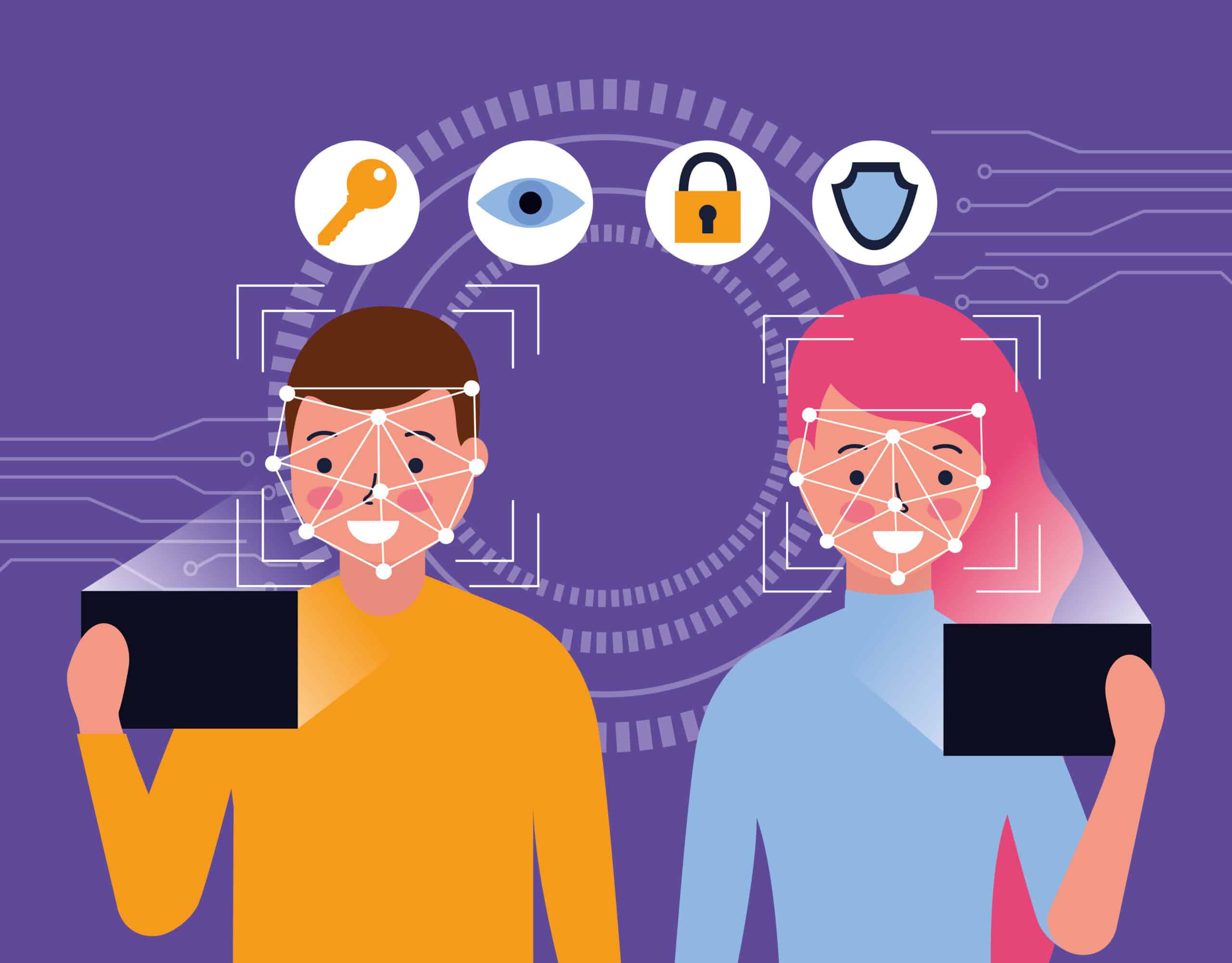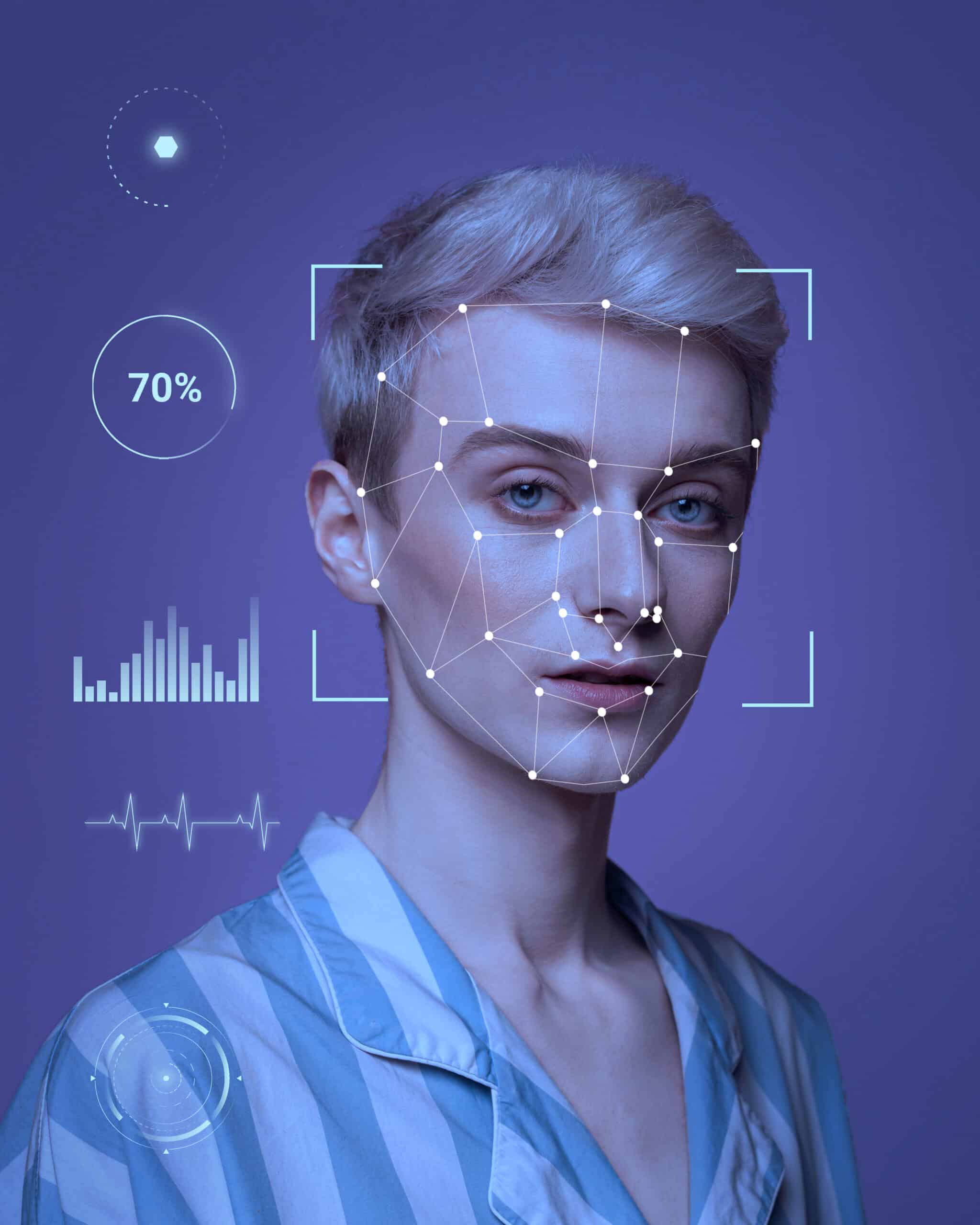The Future of Security: Facial Recognition Identity Verification Trends


Facial recognition technology has become increasingly prevalent in our society, revolutionizing the way we verify identities. This article explores the ins and outs of Facial Recognition Identity Verification, shedding light on its workings, benefits, concerns, and current trends. From enhanced security and increased efficiency to potential privacy issues and biases, we delve into the evolution of this technology over time and what the future holds for Facial Recognition Identity Verification. Let’s uncover the fascinating world of facial recognition technology together.
What is Facial Recognition Identity Verification?
Facial Recognition Identity Verification is a cutting-edge technology that utilizes facial features to confirm an individual’s identity.
By leveraging advanced facial recognition technology, this innovative verification method analyzes unique facial characteristics to validate a person’s identity with a high level of accuracy. Through the use of artificial intelligence algorithms, this process not only confirms identities swiftly but also provides a secure and convenient way to access various services or facilities. Additionally, this technology represents a significant advancement in verifying identities, offering enhanced security measures and streamlining authentication processes in a variety of sectors, from finance to access control.
How Does Facial Recognition Identity Verification Work?
Facial Recognition Identity Verification operates by analyzing unique facial features to establish and authenticate an individual’s identity.
- This process commonly involves capturing an individual’s facial biometrics, such as the distance between their eyes, the shape of their face, and other distinctive features. These biometric data points are then converted into a digital format and compared against a stored database for authentication purposes.
Various authentication techniques, including 3D facial mapping and liveness detection, are utilized to ensure the accuracy and security of the identity verification process. By combining biometrics with authentication methods, facial recognition technology offers a highly efficient and reliable means of verifying identities in various sectors, from security and law enforcement to finance and retail.
What Are the Benefits of Facial Recognition Identity Verification?
Facial Recognition Identity Verification offers a myriad of benefits, including enhanced security measures and streamlined identity verification processes.
- By harnessing advanced technology, facial recognition systems can accurately verify individuals’ identities by analyzing unique facial features, making it difficult for unauthorized personnel to gain access.
- These systems not only provide a higher level of security but also eliminate the need for traditional identification methods like ID cards or passwords, reducing the risk of identity theft or fraud.
- The convenience and efficiency of facial recognition technology make it ideal for various industries, such as banking, healthcare, and transportation, where quick and reliable identity verification is crucial.
Enhanced Security
Enhanced Security is a crucial aspect of Facial Recognition Identity Verification, as it implements robust security protocols to combat cyber threats and safeguard data privacy.
By integrating stringent security measures such as multi-factor authentication and encrypted data transmission, facial recognition technology ensures a heightened level of protection against unauthorized access. These security protocols work in tandem with advanced cybersecurity measures like continuous monitoring, threat detection, and rapid response strategies to fortify the system’s defense mechanisms.
The emphasis on data privacy is reinforced through compliance with industry standards such as GDPR and rigorous access controls to manage and protect user information from potential breaches.
Increased Efficiency
Increased Efficiency is a key benefit of Facial Recognition Identity Verification, leveraging machine vision technology to enhance fraud prevention and access control.
By harnessing the power of machine vision, facial recognition systems are able to quickly and accurately verify individuals’ identities, reducing the risk of unauthorized access or fraudulent activities. This technology allows for seamless integration with existing access control systems, providing organizations with a more secure and efficient way to manage entry points and monitor personnel movements. The real-time processing capabilities of machine vision enable swift responses to potential security threats, ensuring a proactive approach to maintaining a safe environment.
Improved User Experience
Improved User Experience is a hallmark of Facial Recognition Identity Verification, offering seamless personal identification through facial mapping and analysis of facial expressions.
Facial mapping plays a crucial role in this process by creating a unique digital representation of an individual’s facial features, which is then compared and analyzed for accurate identification.
The analysis of facial expressions adds another layer of security and personalization, allowing for dynamic verification processes based on real-time emotions and gestures.
This level of personalized identification not only enhances security measures but also fosters a more intuitive and engaging user interaction, making the overall experience smoother and more user-friendly.
What Are the Concerns About Facial Recognition Identity Verification?
Facial Recognition Identity Verification raises several concerns, ranging from privacy implications and biases to potential security challenges.
Privacy concerns are a major point of apprehension when it comes to Facial Recognition Identity Verification. The technology has raised questions about the collection and storage of personal biometric data, with fears of potential misuse or breaches.
Concerns about biases in facial recognition algorithms have been highlighted, with issues of accuracy varying among different demographic groups. Inaccuracies in facial recognition systems have also been a topic of debate, as errors could lead to mistaken identifications and false accusations.
The security challenges associated with protecting sensitive biometric data adds another layer of worry for both individuals and regulatory bodies.
Privacy Issues
Privacy Issues are a critical aspect of Facial Recognition Identity Verification, focusing on data protection, image processing, and surveillance camera implications.
- Facial recognition technology significantly raises concerns regarding the protection of personal data, as it may allow for the storage and access of individuals’ facial scans without their consent.
- The vulnerabilities in image processing algorithms could lead to unauthorized access to sensitive biometric information, heightening risks of identity theft and fraudulent activities.
- The widespread deployment of surveillance cameras equipped with facial recognition capabilities further intensifies the erosion of personal privacy, as individuals are constantly under the watchful eye of these systems, creating a sense of constant monitoring and scrutiny.
Biases and Inaccuracies
Biases and inaccuracies pose challenges to Facial Recognition Identity Verification, stemming from variations in facial features and potential identity theft risks.
These challenges are exacerbated by the inherent limitations of current facial analysis technologies, as they may struggle to accurately distinguish individuals with certain facial characteristics. Discrepancies in lighting conditions, angles, and image quality can further compromise the reliability of facial recognition systems. Such inaccuracies not only hinder the efficiency of identity verification processes but also increase the susceptibility to identity theft and fraudulent activities. Addressing these issues is crucial to enhance the security and reliability of facial recognition technology in various applications.
Potential Misuse
Potential Misuse is a concern in Facial Recognition Identity Verification, involving risks of surveillance abuse, security solution vulnerabilities, and identity fraud exploitation.
These risks stem from the advanced capabilities of facial recognition technology, which, if misused, could lead to unwarranted surveillance and invasion of privacy. Security flaws in the system may also be exploited by unauthorized entities to gain access to sensitive personal information, posing a significant threat to individuals’ data security and confidentiality. The potential for identity fraud looms large, as cybercriminals could potentially manipulate facial recognition systems to bypass verification processes and gain unauthorized access to secure systems or facilities.
What Are the Current Trends in Facial Recognition Identity Verification?
Current Trends in Facial Recognition Identity Verification encompass widespread adoption across diverse industries, integration with artificial intelligence, and significant security advancements.
Industries such as banking, healthcare, and retail have embraced facial recognition technology to enhance customer experience and streamline operations. The fusion of facial recognition with AI algorithms has enabled more accurate and efficient identity verification processes, reducing fraud and improving data security. Recent advancements in security measures, such as liveness detection and anti-spoofing techniques, have bolstered the reliability of facial recognition systems, making them more resistant to manipulation and unauthorized access.
Adoption in Various Industries
Adoption in Various Industries showcases the versatile applications of Facial Recognition Identity Verification in security systems, innovative security applications, and cutting-edge identity verification technologies.
It plays a crucial role in enhancing security measures in transportation hubs, where it can be used to accurately identify travelers, regulate access to restricted areas, and monitor for suspicious activities. Across the healthcare sector, this technology aids in patient identification, ensuring the right individual receives medical attention, while also enabling secure access to sensitive medical records. The utilization of Facial Recognition Identity Verification in banking and finance has redefined the authentication process, allowing for secure and quick customer verifications, preventing fraudulent activities.
Integration with Artificial Intelligence
Integration with Artificial Intelligence signifies the convergence of Facial Recognition Identity Verification with machine learning algorithms, advanced authentication techniques, and notable security advancements.
This innovative integration leverages machine learning capabilities to continuously enhance the accuracy and efficiency of facial recognition systems. By analyzing vast amounts of data, the technology can adapt and improve its identification processes over time.
The collaboration with sophisticated authentication techniques ensures robust safeguards against unauthorized access or fraudulent attempts. These advancements represent a significant leap forward in security measures, offering businesses and organizations highly dependable solutions for identity verification and access control.
Development of Contactless Solutions
Development of Contactless Solutions signifies the evolution of Facial Recognition Identity Verification towards contactless solutions, emphasizing facial biometrics, access control mechanisms, and cutting-edge facial recognition technology.
This shift towards contactless solutions has revolutionized the way security measures are implemented, replacing traditional methods with more convenient and secure options. Facial biometric applications, a crucial component of this evolution, have become increasingly accurate and reliable, offering a seamless user experience. Additionally, access control innovations powered by facial recognition technology have enabled organizations to streamline entry processes, enhance security protocols, and ensure a frictionless authentication process.
The integration of state-of-the-art facial recognition technology has not only improved efficiency but also raised the bar for data security and authentication practices in various industries.
How Has Facial Recognition Identity Verification Evolved Over Time?
Facial Recognition Identity Verification has evolved significantly over time, from early developments and initial use cases to the integration of advanced facial matching, emerging security trends, and sophisticated facial recognition technology.
Continuous advancements in facial matching algorithms have driven the evolution of facial recognition technology, improving the accuracy and efficiency of identity verification processes.
Security trends have played a crucial role in shaping the landscape of facial recognition, with a growing emphasis on robust encryption protocols and secure data storage mechanisms.
The adoption of cutting-edge facial recognition technology in various sectors, such as law enforcement, banking, and retail, reflects the increasing reliance on biometric authentication methods for enhancing overall security measures.
Early Development and Use
Early Development and Use of Facial Recognition Identity Verification marked the initial stages of adoption, overcoming security challenges, establishing foundational identification systems, and laying the groundwork for advancements in the security industry.
During these early phases, the primary focus was on refining the accuracy and reliability of facial recognition technology to ensure that it could effectively identify individuals in various conditions. Security challenges such as false positives and privacy concerns prompted developers to enhance the algorithms and protocols governing these systems. Additionally, the implementation of these identification systems in different sectors like banking, law enforcement, and airports showcased the potential for increased security and efficiency. This technology quickly began to revolutionize how security measures were implemented, fostering a shift towards more sophisticated and automated security protocols.
Advancements in Technology
Advancements in Technology have propelled Facial Recognition Identity Verification forward, enabling robust defense mechanisms against cyber attacks, the refinement of facial recognition systems, and the formulation of stringent security protocols and policies.
These developments have revolutionized the way in which organizations safeguard their sensitive data and secure access to their digital assets. Additionally, implementing advanced facial recognition technology has significantly enhanced authentication processes, thwarting potential cyber threats with more accuracy and efficiency. In addition, the continuous improvement of facial recognition algorithms has led to greater precision in identifying individuals, contributing to a more reliable and secure identity verification process.
Organizations have responded by establishing comprehensive security policies and protocols that integrate facial recognition technology as a core component of their defense against cyber threats.
Growing Popularity and Controversy
Growing Popularity and Controversy have accompanied the rise of Facial Recognition Identity Verification, leading to significant advancements within the identity verification industry, while also sparking debates over privacy concerns and ethical implications.
This technology has revolutionized various sectors, from secure access control at corporate offices to enhancing customer experiences in retail environments. Also, its implementation has streamlined processes, reducing manual errors and improving overall efficiency.
As Facial Recognition Identity Verification becomes more ubiquitous, questions have arisen regarding data security and the potential for misuse. Critics argue that this technology infringes upon personal liberties and could lead to mass surveillance, raising important ethical dilemmas that the industry must address moving forward.
What Does the Future Hold for Facial Recognition Identity Verification?
The future of Facial Recognition Identity Verification holds promising prospects, with ongoing advancements in technology trends, the development of innovative identity verification solutions, and the constant evolution of security innovations.
These advancements in facial recognition technology are paving the way for more accurate and efficient verification processes. From enhanced biometric sensors to AI-powered algorithms, the future trajectory of facial recognition is focused on improving user experience and security measures.
As businesses and organizations increasingly prioritize data protection, we can anticipate a rise in multi-factor authentication methods, incorporating facial recognition as a key component. Additionally, the integration of blockchain technology and decentralized identity verification systems further exemplifies the commitment to enhancing security through innovative solutions.
Frequently Asked Questions
What is facial recognition identity verification and why is it important in the evolution of security?
Facial recognition identity verification is a technology that uses biometric data to identify and authenticate individuals. It is important in the evolution of security because it provides a more accurate and efficient way to verify a person’s identity, reducing the risk of fraud and security breaches.
How does facial recognition identity verification work?
Facial recognition identity verification uses algorithms to analyze facial features and create a unique biometric template for an individual. This template is then compared to an existing database to determine if there is a match.
What are the benefits of using facial recognition identity verification in security?
Some benefits of using facial recognition identity verification in security include faster and more accurate identification of individuals, reduced risk of human error, and the ability to track and monitor individuals in real time.
Are there any concerns or criticisms about facial recognition identity verification?
Some concerns about facial recognition identity verification include the potential for false positives and false negatives, as well as the potential for privacy violations and misuse of personal biometric data.
How has the use of facial recognition identity verification evolved over time?
Facial recognition identity verification has transitioned from its origins as a technology primarily utilized by law enforcement and government agencies to becoming a widespread tool employed in various industries, including banking, retail, and transportation.
What does the future hold for the evolution of security and facial recognition identity verification?
The future of security and facial recognition identity verification is likely to involve increased integration with other technologies, such as artificial intelligence and augmented reality, to provide even more accurate and secure methods of identification and authentication.



